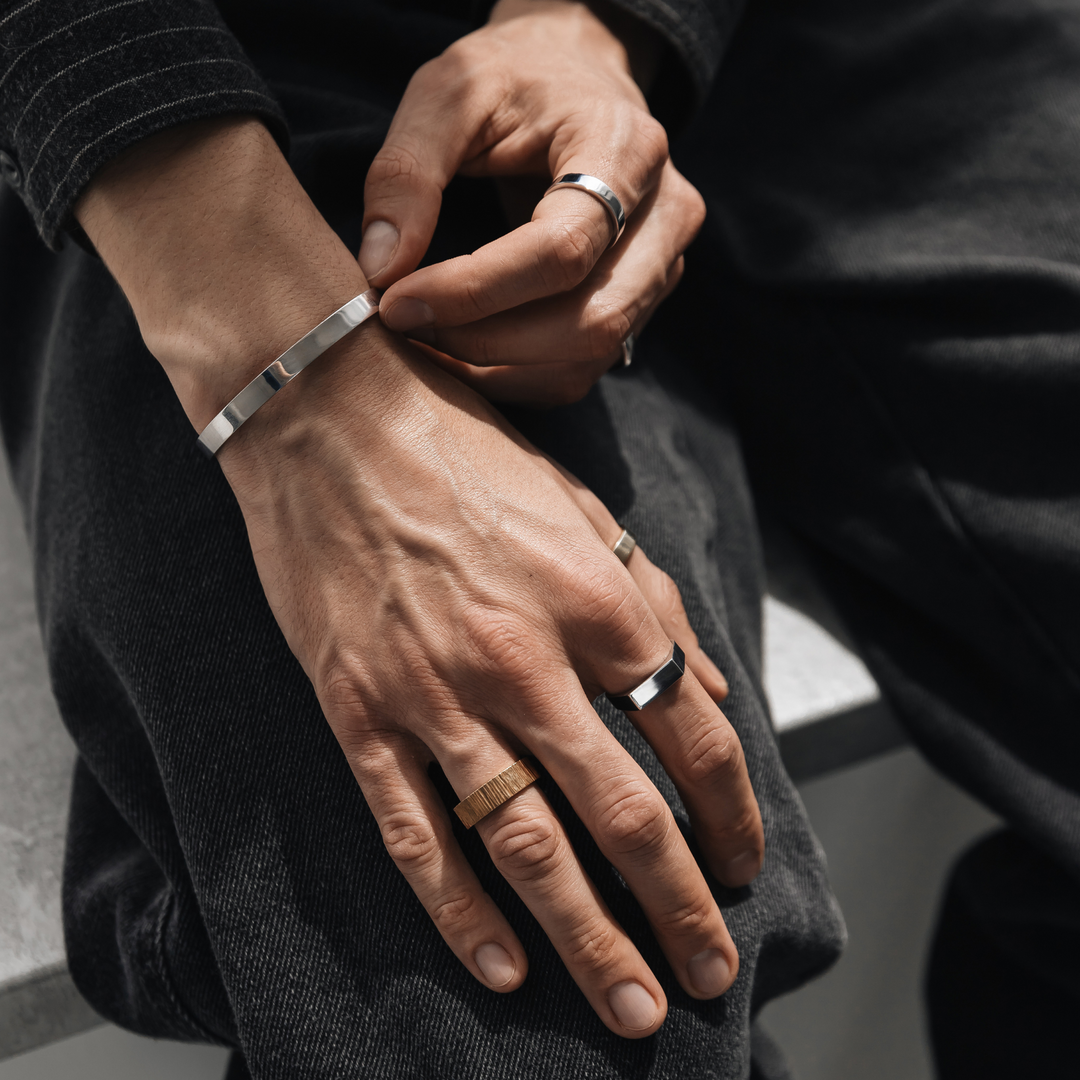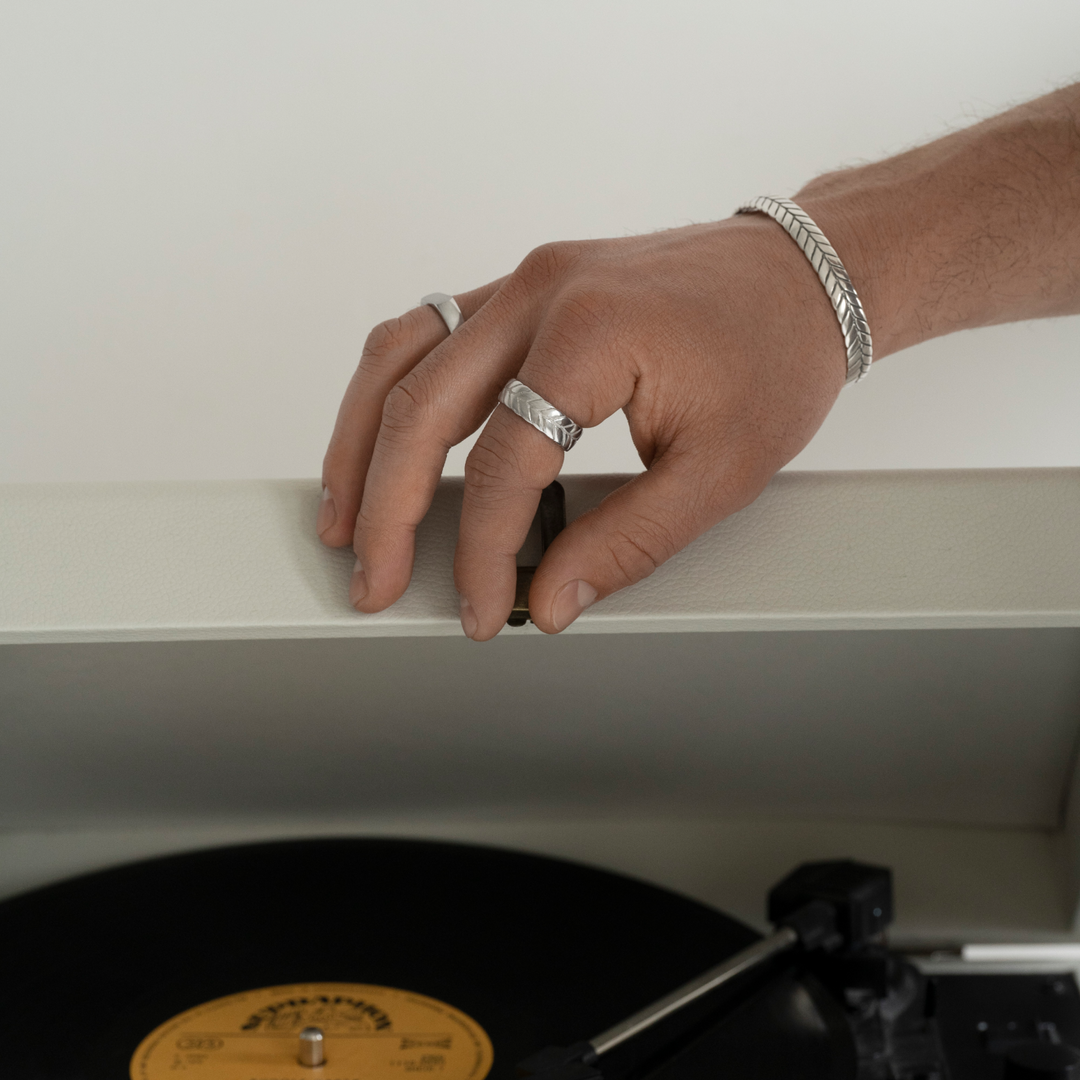Here are some tips for caring for silver jewelry
1. Storage in the right place: Store your silver jewelry in a separate box or bag to prevent scratches and scuffs. Avoid storing in damp places as moisture can cause oxidation of silver.
2. Wear it regularly: Silver is best preserved if you wear your jewelry regularly. Contact with the skin helps prevent oxidation.
3. Avoid contact with chemicals: Avoid contact of silver jewelry with chemicals such as detergents, perfumes, cosmetics and hair care products. These substances can damage the silver.
4.Cleaning: Clean your jewelry regularly to remove dust and deposits. You can use soapy water, a soft brush, or special wipes for silver.
5. Polishing: If the silver has darkened or lost its luster, you can use special products to polish silver jewelry. Polishing will help restore the shine.
6. Antioxidant wipes: Use antioxidant wipes to help prevent oxidation and keep your silver in good condition.
7. Avoid water: Avoid contact of silver with water, especially seawater and chlorinated water. After contact with water, dry your jewelry thoroughly.
8. Remove jewelry before going to bed and playing sports: Silver is subjected to mechanical stress during sleep and vigorous exercise. Remove your jewelry to avoid damage.
9. Professional cleaning: Despite the fact that cleaning silver jewelry is not something very complicated, we recommend that you contact us, or any other jewelry workshop, with this.
Gold and rhodium plating solves the problem of tarnishing and oxidation of jewelry. But in this case, you should avoid cleaning the jewelry with brushes and abrasive materials.

Rhodium plating (rhodium plating)

Rhodium plating (rhodium plating) is the process of applying a thin layer of rhodium to the surface of metal products, most often silver or gold. Rhodium belongs to the platinum group of metals and is a precious metal. It is used in jewelry and watchmaking for several reasons:
Luster and light reflection: Rhodium has a brilliant and mirror-like luster, which makes jewelry more attractive and gives it a precious look.
Protection against oxidation: Rhodium prevents the base metal (e.g. silver) from oxidizing and protects jewelry from tarnishing and corrosion.
Hypoallergenic: Rhodium is a hypoallergenic metal, so its plating makes jewelry safe for those prone to allergic reactions to metals.
Improved durability: Rhodium improves the durability of jewelry and makes it less prone to scratching and wear.
Ease of care: Rhodium-plated jewelry is easier to care for because it is less prone to oxidation and tarnishing.
Rhodium, as a coating, tends to wear over time, and jewelry may need to be refinished or re-plated periodically to maintain its luster.
Gold plating
Gold plating is the process of applying a thin layer of gold to the surface of anothermetal, such as silver, copper, stainless steel or even plastic.This process can be done in several ways, including electrolysis, hot pressing or chemical deposition.
anothermetal, such as silver, copper, stainless steel or even plastic.This process can be done in several ways, including electrolysis, hot pressing or chemical deposition.
Gold-plated silver has several advantages that make it attractive for making jewelry and other items:
The appearance of gold: Gold-plated silver has the luster and appearance of gold, which makes jewelry more precious and attractive. It makes it possible to enjoy the aesthetic qualities of gold without having to pay for a full gold piece.
Affordability: Gold-plated silver usually costs significantly less than pure gold. This makes it accessible to a wide range of consumers who want to enjoy the golden look but cannot afford real gold.
Corrosion resistance: The gold plating protects the silver from oxidation and corrosion, which helps to maintain the shine and quality of the product for a long time.
Hypoallergenicity: Gold-plated silver is usually less likely to cause allergic reactions than some other metals. This makes it suitable for people with sensitive skin.
Variety of styles and designs: Gold-plated silver can be used to create a variety of jewelry styles and designs, giving jewelers and designers great flexibility.
Easy care: Gold-plated jewelry is easier to care for than sterling silver jewelry. They are less prone to scratches and tarnishing.
Blackened silver

Silver blackening is the process of oxidizing the surface of silver, which gives it a dark or black hue. This effect is achieved by exposing silver to special chemicals or by heating it.
Blackening is used to create contrast and emphasize the details of jewelry. It can be applied to the entire surface of the product or only to certain areas to highlight patterns or textures.
Blackened silver jewelry has several advantages:
Aesthetics: Blackening creates contrast and gives jewelry a unique, mysterious look. It highlights the details of patterns and textures, which makes the products more noticeable and interesting.
Scratch resistance: Blackened silver jewelry may be less susceptible to visible scratches and scuffs due to the fact that blackening can hide small surface defects.
Versatility of style: Blackened silver often has an elegant and modern look, so such jewelry can be suitable for a variety of clothing styles
Accentuate the design: The blackening effect can help to highlight certain design elements, making the jewelry more expressive and attractive.
Antique look: Blackening can give jewelry an antique, vintage look, which can be attractive to those who appreciate this style.





